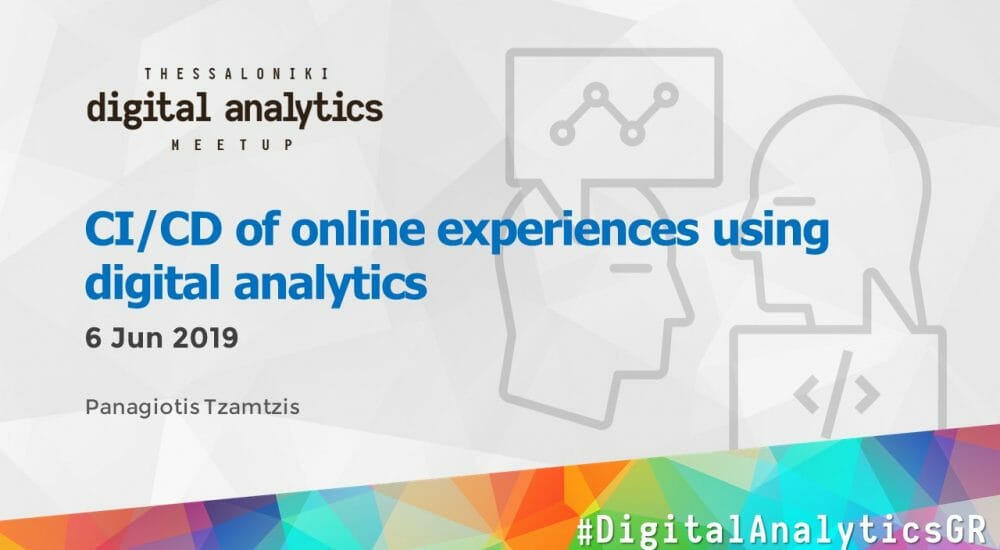CI/CD of online experiences using digital analytics – Digital Analytics Meetup session
As part of the 17th digital analytics meetup, which I’m hosting in Thessaloniki, I held a talk on how to use common digital analytics tools to optimize the online experience of visitors. I wanted to show ways a digital analyst can utilize commonly used tools/services in smart ways, which go beyond what is advertised by the vendors.
A mature, professional website starts its development cycle several months before its publication, but many may do not know that its development is completed shortly before it is replaced by its replacement (usually several years later). During its “life” there are constantly technical and UX improvements that must be made to meet the visitors’ needs.
But how can an organization’s digital analytics department help designers and developers make the website’s navigation more intuitive, improve the visitor experience and finally optimize the website’s conversions? In the following presentation I am presenting commonly-used data collection tools (such as heat-maps, web analytics, session recording) that enable continuous improvement taking into account the real needs of visitors. Finally, I’m also explaining how all these tools can be integrated to further improve the end results.
Check out the meetup’s website for more sessions on improving online experiences and the role of digital analytics in UX optimization.
If you are interested in Digital analytics and data analysis in general, feel free to follow the “Digital analytics meetup” community from Thessaloniki, to see more posts like this one.


